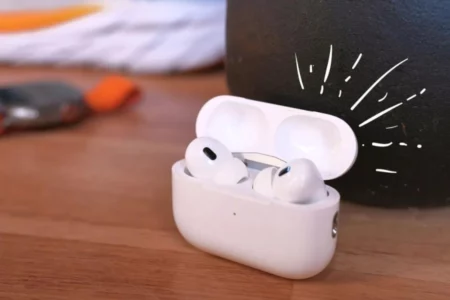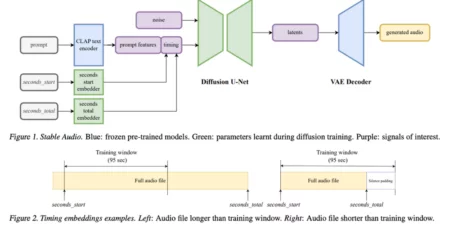The various subwoofers are developed in different ways. Some subwoofers own an amplifier constrained in the enclosure that is known as powered subwoofer; others have the subwoofer inside the chamber. Such subwoofers need you to do the electrical wiring on your own.
There are numerous various kinds of subwoofers with multiple sorts of voice coils. Wiring is relatively easy if you’re mounting a single voice coil subwoofer. However, it can be complicated if the sub has several voice coils.
Subwoofer Circuit Diagrams
There are several means to wire subwoofers and amplifiers with each other. The optimal configuration is when subs and amplifiers match their impedance and power abilities to enhance efficiency.

How to Detect Subwoofer Clipping
Reference of Subwoofer Wiring Terms
In this short portion, we’ll assist you to discover the best subwoofer wiring diagram with all references for connecting your system.
– SVC
A Single Voice Coil in a single subwoofer wiring diagram has two electrical wiring terminals, one significant positive and significant negative.
– DVC
A Double Voice Coil subwoofer has four electrical wiring terminals, two positive and two negative terminals. The additional terminals provide you with much more electrical wiring for the audio speakers.
– Ohms
The impedance of a speaker coil is measured in ohms. Impedance is the resistance or loads a subwoofer mount against an amplifier’s result. Subwoofer voice coils typically are available in 2-ohm, 4-ohm, or 8-ohm impedances. The well worth is often found released on the magnet if you are uncertain of what you have in subwoofer ohm wiring.
Series Electrical Wiring and Parallel Circuitry
These terms describe two methods of transmitting the audio speaker wires to your subs to handle the total impedance load appropriately. Whether you need to make use of a series wiring configuration, parallel circuitry, or a mix of both, our layouts will expose specifically the very best approach to wire your subwoofers.
– Amplifier Outcome
An amplifier will undoubtedly produce even more power with a low-impedance sub than it will certainly with a high-impedance subwoofer. However, a reduced impedance likewise implies even more stress on the amp. Some amplifiers can also drive a 1-ohm load securely and accomplish the optimal outcome. Describe your amplifier producer or proprietor’s guidebook to determine whether your own can manage a low-impedance load.
– Bridged Setting
Connecting an amplifier integrates two amplifier channels right into one to obtain even more power. Exactly link the amplifier is typically suggested at the amplifier’s subwoofer cord terminals.
– Wire Cord
All the cords illustrated in the Subwoofer Wiring Diagrams are audio speaker cords. For electrical wiring subwoofers, it is suggested utilizing cables of 12- to 16-gauge in dimension.
What is The Best Way to Wire a Single Subwoofer?
An aftermarket stereo can go a long way, including high quality to your listening experience. A poor electrical wiring task can leave you with blown subwoofers, a distracted amplifier, or sometimes also capture your automobile ablaze. If you intend to mount your very own subwoofers, ensure that you comprehend the essential wiring that enters into the task.

Comprehending Fundamental Subwoofer Wiring Concepts
- Know the distinction between electrical wiring in series and parallel.
- Comprehend what impacts various wiring carries your power outcome.
- Have the ability to determine your system’s parts and their features.
– Make a Subwoofer Wiring Diagram
- Find the requirement tags for your system.
- Jot down these values.
- Amplifier’s Output Power.
- Amplifier’s Minimum Impedance.
- Speaker Power Rating.
- Speaker Impedance.
- Compute the overall impedance of all of your subwoofers.
- Determine the power each subwoofer will undoubtedly obtain.
– Wiring the System
- Disconnect the battery terminals.
- Wire the amplifier to your initial subwoofer.
- Attach the remaining subwoofers.
- Shut the circuit.
- Attach the battery cable.
- Volume up the music.
You can now enjoy your music and ensure that everybody else does too!
How Do You Wire a DVC Subwoofer?
In order to wire a DVC subwoofer, it is essential to understand what your speaker’s impedance is, along with what your amplifier’s steady impedance is.
If you want to get an amplifier along with two Double 4Ω speakers, you will require to recognize whether the amplifier is at 1Ω. And if it is not stable at 1Ω, you will have the ability to wire up the system with a load of 4Ω.

We are offering a comprehensive guide for subwoofer wiring diagrams. This guide has full-fledged info about subwoofer Ohm wiring of single & dual subs wiring.
DVC Subwoofer Wiring in Series
Electrical wiring in series integrates the coils to enhance impedance. The circulation of voltage in series links is the total impedance of each component, as all those components have a link in a single.
Adhere to complying with steps to wire a DVC subwoofer in series:
- Initially, link the positive terminal from Voice Coil 1 to the positive output of the subwoofer from your amplifier.
- Then, affix the negative terminal from Voice Coil 1 to the positive terminal on Voice Coil 2.
- Lastly, link the negative terminal of Voice Coil 2 to the negative outcome of the amp.
DVC Subwoofer Wiring in Parallel
Parallel electrical wiring minimizes impedance. When wiring of subwoofers is in parallel, they link to the amplifier in parallel, and the voltage divides, so the same voltage is sent out to every driver.
Adhere to the following steps to wire a DVC subwoofer in parallel:
- Attach the positive voice coil leads with each other and wire them to the positive outcome terminal of your amplifier.
- Then, link the negative voice coil terminals with each other and cord them to the negative outcome lead of the amp.
Dissimilarities or Contrast between Single Voice Coil Subwoofer and Dual Voice Coil Subwoofers?
Criterion subwoofers or audio speakers have the adhering to components:
- A metal basket in which the audio speaker components are housed and a magnet is affixed.
- Big long-term magnet.
- Subwoofer cone surround.
- Subwoofer cone surround and dirt cap.
- Voice coil bobbin.
- A “spider,” a rigid yet adaptable product that puts the voice coil setting up on hold.
- Voice coil: firmly wound little gauge cable of huge size.
- Voice coil cable terminals and connection terminals.
Single voice coil subwoofers own just a single audio speaker voice coil curving; on the other hand, dual voice coil versions own a second voice coil of the very same impedance included in the bobbin.
How Do You Wire a Subwoofer With 4 Terminals?
Wiring a subwoofer with 4 terminals is a fundamental method you can use to wire a dual 4-ohm speaker to a load of 2-ohm.
If you seek to obtain one of the most powers from the amplifier for your subwoofer, this is among the best methods to wire your speaker. It is a standard approach to wiring that functions effectively. It would be best to wire the subwoofer in “parallel” to accomplish this impedance (ohm).

1) Collect the Necessary Products and Prepare the Box.
Below is the listing of subwoofer wiring diagram tool that are essential for this basic setup.
- A Subwoofer.
- A Subwoofer Cable.
- A Monoblock Amplifier.
- A Bag of Poly-Fil Fiber Fill.
- A Subwoofer Enclosure.
- A Cable Crimper.
- Screws.
- Power drill.
- A Subwoofer Grille.
- A Can of Adhesive Spray.
- Cut and prepare the Subwoofer Cable.
- Wire both Negative and Positive leads for Voice Coil 1.
- Attach the 2nd Negative Terminal.
- Link the 2nd Positive Terminal.
- Examine the Wiring and Mount the Subwoofer.
Currently, it would be best if you had an X-crossed circuitry layout throughout the bottom of the subwoofer. This circuitry links the voice coils and circuitry in a similar setup.
Mount the subwoofer and grille right into the enclosure utilizing screws and a power drill to pierce the screws right into the wooden section. The crammed subwoofer box can be attached to an amplifier that goes with the mounted subwoofer ratings.
Can You Use a 4 Channel Amp for 1 Sub?
You can conveniently bridge two outputs to the subwoofer and leave the remaining two channels for front audio speakers.
Bridging 4 Channel Amp for 1 Sub:
Bridging any amplifier might initially appear essential and challenging. However, as soon as you recognize the precise procedure, it comes to be simple, and any individual can do it yourself regardless of the number of channels your amplifier features.
This bridging is since the major procedure coincides for each channel, and as soon as you find out just how to bridge a two-channel amplifier, you will certainly have the ability to bridge a four-channel amplifier as well.
Suppose you have a four-channel amplifier. You can quickly increase its power output to double by bridging it. So forth, no doubt you will accomplish to drive far more power to your audio speakers. With the fundamental understanding of automobile sound wiring, you can conveniently connect a four-channel amplifier.
What You Required?
Before you start the procedure, you require some products for collaboration. Below is a listing of what you require.
- 4-channel amplifier: examine if your 4-channel amplifier has a bridging choice.
- Screwdriver: it will certainly aid with hooking up the screws affixed to the amplifier, as you have seen in the process above.
- Cord stripper: it will certainly be utilized to split up the side of the cable before placing it right into the amplifier channel.
- Audio speaker cords: the audio speaker cables will certainly be required to attach to the amplifier’s terminals.
- Guidebook: before you well comprehend the connection procedure, you will certainly require to undergo the guidebook to recognize whether you can bridge the amplifier or not.
One of the most typical means to have your amplifier bridged is to attach it to a set of 4-ohm subwoofers. Comply with the process listed below to bridge the amplifier:
- Find the subwoofer cable terminals.
- Attach the positive terminal of channel 1 to the speaker.
- Link the negative terminal of channel 2 to the speaker.
- Repeat steps 1 and 2 for channels 3 and 4.
What Gauge Wire for Subwoofer?
Are you wondering what gauge wire for subwoofer will help you to handle the power-consuming part of your sound system? Let’s explore this in this guide!
It is an important thing to choose the right wire for your subwoofer. Pay attention to selecting the right wire to avoid many problems when playing with high wattage. Using up to 12 AWG is good if you want anything crossing a thousand watts.
However, there are several factors you should consider before buying a gauge wire for your subwoofer. Generally, thick wire is the best option as it can provide possible resistance. But do your research and see the manufacturers’ recommendations so that you can go with the right quality ad thickness.
You can use American Wire Gauge standards to help you choose the right size of wire that will meet your needs. In this guide, I will cover different aspects of subwoofer wiring. So, stay with us!
What Gauge Wire for Subwoofer Home Theater?
It depends on the distance between the subwoofer and the Amp. Consider the subwoofer’s power rating while deciding on gauge wire for the subwoofer home theater. If the distance is about 25 feet and the power rating is 1000 watts RMS, then a 16 gauge wire is good.
If the distance is 50 feet and the power rating is 2000 watts RMS, you may require a 14 gauge wire. As the distance increases, reduce the number of gauge wires; a 12 or 10-gauge wire is important for a longer distance.
What Gauge Wire for Subwoofer Amp?
The gauge wire you may require for your subwoofer Amp depends on the maximum current your Amp will draw. A rule of thumb is that the 12 gauge wire is more than enough for a subwoofer amp for your audio car system.
What Gauge Wire for 3000 Watt Subwoofer?
The gauge of wire you may require for your 3000-watt subwoofer depends on the length of the wire run and the sub’s impedance. The general rule is that for a run of about 10 feet, a 4 gauge wire is more than enough. The 2 gauge wire is best if the run is up to 20 feet.
But for longer runs and low impedance subwoofers, consider thicker wires such as 0 gauge wires that may do well for longer runs. If you cannot decide, it is good to get the services of professionals for your setup.
You should consider at least 3 AWG copper or 1 AWG aluminum conductor for your 100 amp subwoofer panels. But it is good to consult a professional for specific recommendations. So that they will decide the right length of gauge wire, the type of wiring you use, and certain needs for installation according to the distance.
If your Amp has greater power ratings, you can use a 12 gauge speaker wire for your subwoofers. 12 gauge speaker wire is good for power ratings ranging from 100 watts to 600 watts. However, a 1 or 16-gauge wire is sufficient if your speaker has low power ratings ranging from 40 to 50 watts.
The 16, 1, and 12-gauge wires are best for most subwoofers. You can also use an 8 gauge speaker wire for your 2-ohm or 4-ohm sub, as it can handle the power supply without any issue. But if your subwoofer system is up to 5000 watts and has a lower impedance than that, you may require thicker wire gauges such as 14 gauge speaker cables.
If the distance is up to 40 feet and you use a 22 gauge speaker wire, it may have higher resistance than the speaker. It will transfer more power to the wires instead of the speakers, which is not good. So, it is important to ensure that up to 90% of amp power will reach the speakers, and for this, you can use a 14 gauge wire instead of a 22 gauge speaker wire.
18 gauge speak wire will work great if your setup is in a small area with lower power. But for longer and high power setups, you should consider thicker wire such as 14 gauge or 16 gauge as they can minimize the resistance and give you an optimal performance.
24 gauge speaker wire is thin enough and may not perform well for various home theater and car audio setups. However, 24 gauge wire may work well for low-power applications and shorter runs. But for longer distances and higher power applications, use thicker wires for optimal performance.
You can use up to 12 gauge speaker wire for your 1000-watt subwoofers. It also depends on the wire run length and factors like amp power and impedance. The thicker wire may perform well for longer runs as it will minimize the resistance and give you great performance.
You may require up to 10 gauge speaker wire for your 1500-watt subwoofers. Considering the amp power and impedance before choosing any wire gauge for your system would be best. For longer distances and higher power, choose a thicker gauge.
Generally, thicker gauge speaker wire offers low resistance and can carry more current with less power loss than thinner wire. If you use thicker wire for your sub, you will get better sound quality and feel less distortion.
You can determine the wire length in different ways. Use a string and run it from your Amp to each speaker position. The overall length of the string is the length of the gauge wire you may require for your setup. You can add a few feet to the string measurement to avoid loss. However, using a subwoofer speaker wire gauge chart may prove helpful for accurate measurement.
According to my understanding, the guide offered for you about the Subwoofer Wiring Diagrams is complete. You can comfortably grab the useful details regarding wiring your subwoofer. Suppose you check out the entire instructions before wiring. In that case, it is ensured that you will undoubtedly have the ability to manage any trouble concerning wiring promptly and conveniently. This guide will assist you in bridging and wiring your subwoofer to ensure that you can take pleasure in music with no distortion.
Final Thought





